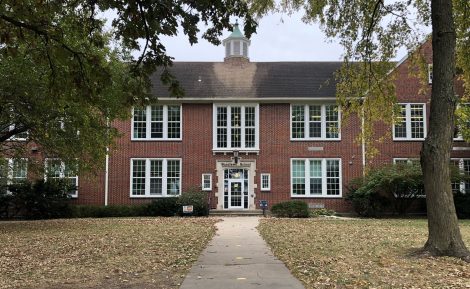School consolidation group looks beyond closings

Six Lawrence elementary schools are being considered for consolidation. They are, clockwise from left, Sunset Hill, Kennedy, Hillcrest, New York, Pinckney and Cordley Elementary.
The issue of which elementary schools to close in Lawrence is one that won’t go away. But before the school district can decide which schools to consolidate, it needs to create a long-term vision.
That is the lingering conclusion that some members of the Central and East Lawrence Elementary School Consolidation Group have made.
The working group has been charged by the school board to recommend a way to reduce six elementary schools — Cordley, Hillcrest, Kennedy, New York, Pinckney and Sunset Hill — down to three or four within the next two years.
Today, the working group will meet for the last time before passing its recommendations on to the school board.
A week ago, the working group split into two philosophically different camps.
One group, comprised of Cordley, New York and Hillcrest representatives, believes schools should not close. The other group, made up of Kennedy, Pinckney and Sunset Hill representatives, thinks that consolidating schools remains a valid option, but they won’t name which ones should close. The latter group met on Sunday evening to fine-tune its recommendations to the board.
During the meeting, members admitted to being jaded by the six-month process. The group is refusing to name which schools should close because the majority of school board members have expressed doubts that school closures are the best option.
The group’s frustration with the school board’s change of heart was clearly stated in the draft recommendation.
“It is simply unfair to allow a group of volunteers to continue toiling at an immensely difficult task when a majority of you no longer see the task as valid,” it stated.
Even if the group had been told to recommend closing just one school instead of two or three, the process would have been easier, Pinckney representative Andrea Albright said.
“But to add more moving parts to that just made it quite a bit more difficult,” she said.
In its recommendation, the group urges the school board to develop a sustainable vision for elementary schools.
The key issues the board needs to address include:
- Finding a way to more widely distribute English as a Second Language services throughout the district.
- Examining ways to change the school boundaries to alleviate overcrowding in some schools and boost capacity at other ones.
- Considering which schools will likely accommodate an increasing number of students and which schools could close before any significant facility upgrades are made to schools.
The recommendations should act as a road map to help the district create a long-term vision for funding its elementary schools, Albright said.
“Right now, the district may be running in the black, but I think a larger picture to this is a general trajectory toward just a lack of funding. That hasn’t changed,” Albright said.
At today’s meeting, the working group will look for similarities in the two groups’ recommendations, which will then be presented to the school board at its Feb. 27 meeting.







